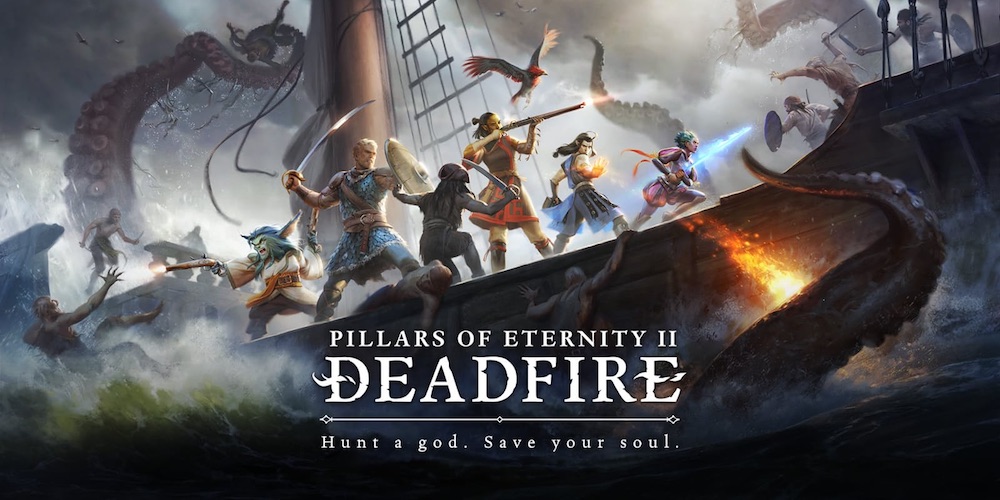
It’s been a busy few years for CRPG fans. After a decade-long dry spell, during which the word “isometric” was replaced by “action” at the front of “RPG,” tabletop nerds had resigned themselves to endlessly replaying the classics and getting into internet arguments every time a “Top 10 Role-Playing Games” list didn’t include Baldur’s Gate. Then, all of a sudden, a flurry of activity saw the enormously successful releases of Divinity: Original Sin (2014) and Pillars of Eternity (2015), both of which offered a degree of tactical depth and lore-obsession that the modern RPG gamer had all but forgotten. Cue a complete genre revival. Now, in the midst of all the hype, RPG veterans and crowdfunding pioneers Obsidian Entertainment have come to the table with Pillars of Eternity II: Deadfire; a game that not only carries on the traditions of the CRPG genre but pushes some of its core elements to unprecedented heights.
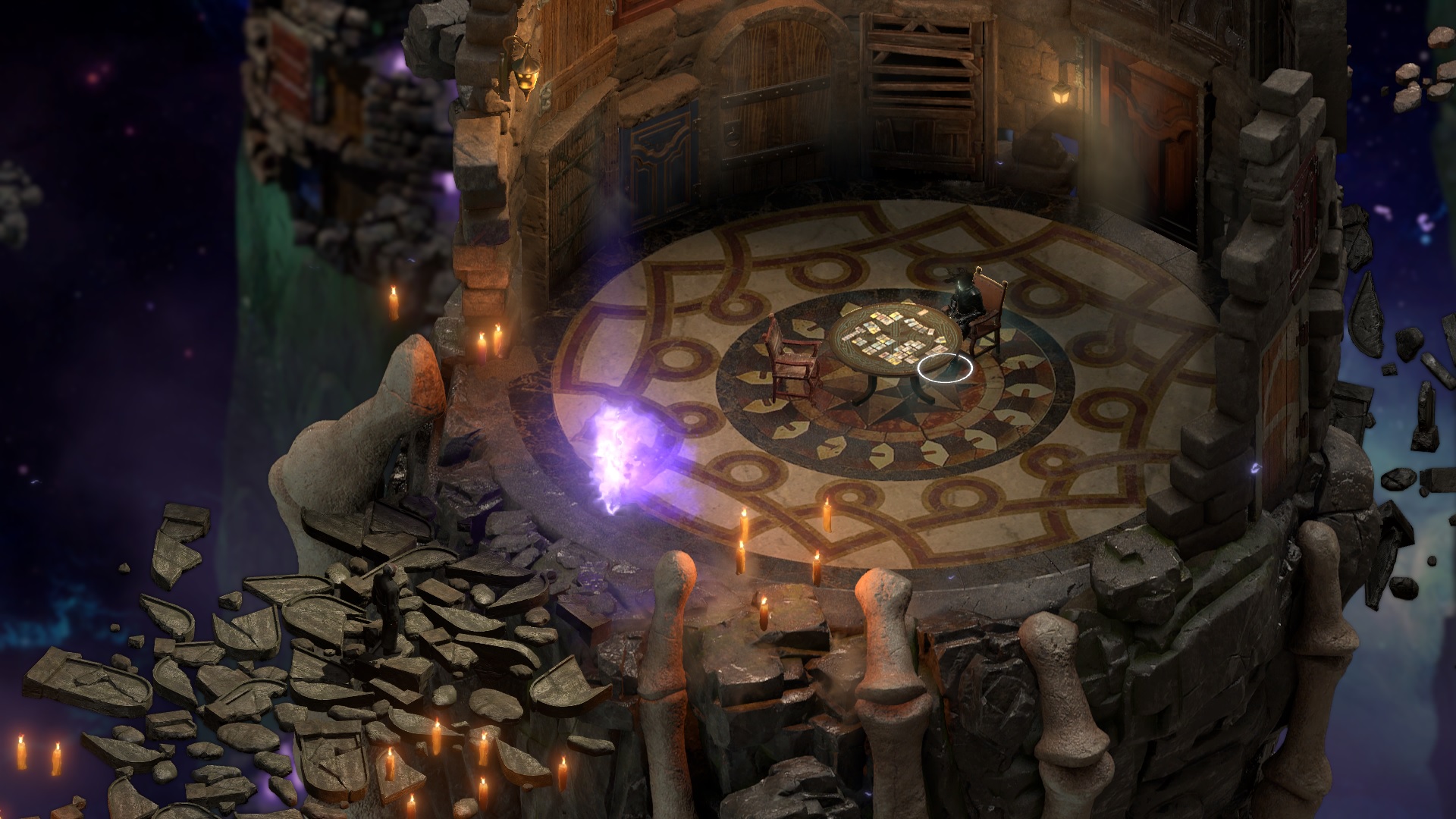
PoE2 carries on directly from the story of the first game, although in an entirely new setting and detached enough from the events of PoE1 that it won’t alienate newcomers. One fantastic addition is a “save generator,” that helps you piece together a history for your character, explaining some of the moral consequences of your broad choices and the impacts you can expect them to have on the world and characters of PoE2. This is, of course, in lieu of simply importing an existing PoE1 save, which is the most thorough way to carry on your character’s story, down to the very granular details; lives you saved, towns you sacrificed, souls you condemned to an eternity of suffering, the usual stuff.
I’ll leave a few critical details for you to discover, but PoE2 kicks off in a suitably intense fashion by awakening a murderous God and sending your now soulless character halfway across the world in pursuit of the giant, stomping deity. It’s as dramatic as you’d expect from a fantasy title, and serves to set the story in motion and justify the change of setting, but falls a little flat in the motivation department. POE2’s main quest is its weakest, mostly due to the dissonance between the urgency communicated by the narrative and the complete lack of it being demanded by gameplay. The game even goes so far as to gatekeep main plot points behind exceedingly difficult combat challenges that require you to have completed significant amounts of side content. In the rush to level up your characters and explore the innumerable pathways laid before you, the main quest easily falls by the wayside.
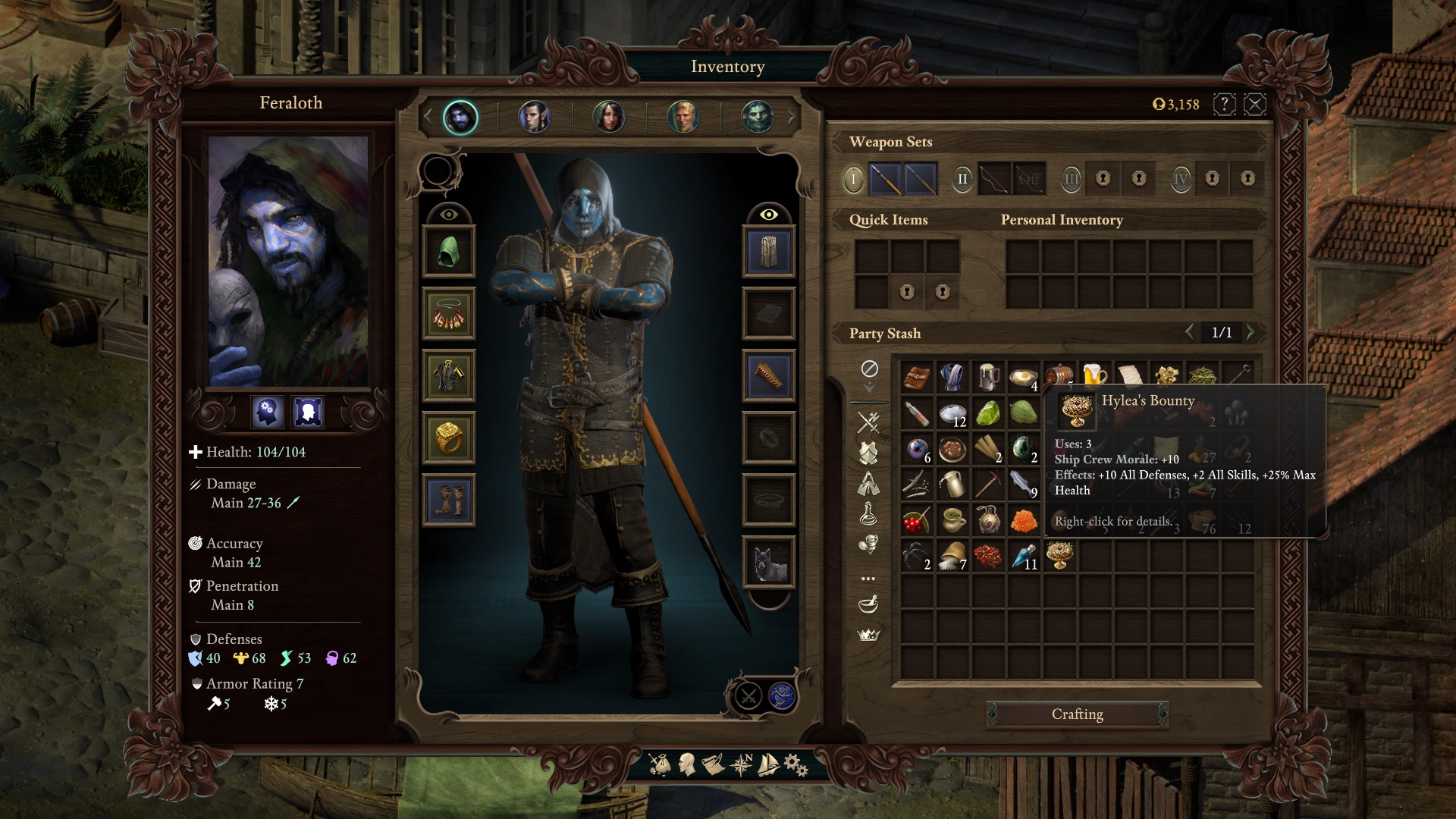
I say “easily” because more powerful than the somewhat flat main quest are the myriad of tales being told in sub-plots and side quests that breathe life, personality and history into the islands of the Deadfire Archipelago. Every part of the map, from island ruins to thriving port cities, is packed with bold, inventive storytelling delivered through interaction with a vast array of uniquely designed characters. Beggars and noblemen, tribal chieftains and merchant princes, pirates and refugees – the Deadfire is teeming with colourful characters, whose lives are crashing into one another’s and your own. For once, a game where every NPC deserves talking to. Writing original, unique plot lines is the easy part. What sets PoE2 apart from almost every RPG in history is the extent to which its world has been developed and defined, and, subsequently, the degree to which each plotline is tied to this vibrant, detailed world.
Take, for example, the story of a human worker, employed by the Vailian Trading Company to plunder the isles of their natural resources, and an Aumaua warrior, who must shed their ancient heritage in the hopes of finding a place in this new world. The two meet in a dice game, and after a racist comment from the human, get into a fist fight that sees the Aumaua brutalise the man and steal all of his money. We’re sent to retrieve the gold, which the man needs to pay his rent and feed his son. Our Aumaua friend does not respond to pleading or intimidation, and will only give up the coin purse upon death.
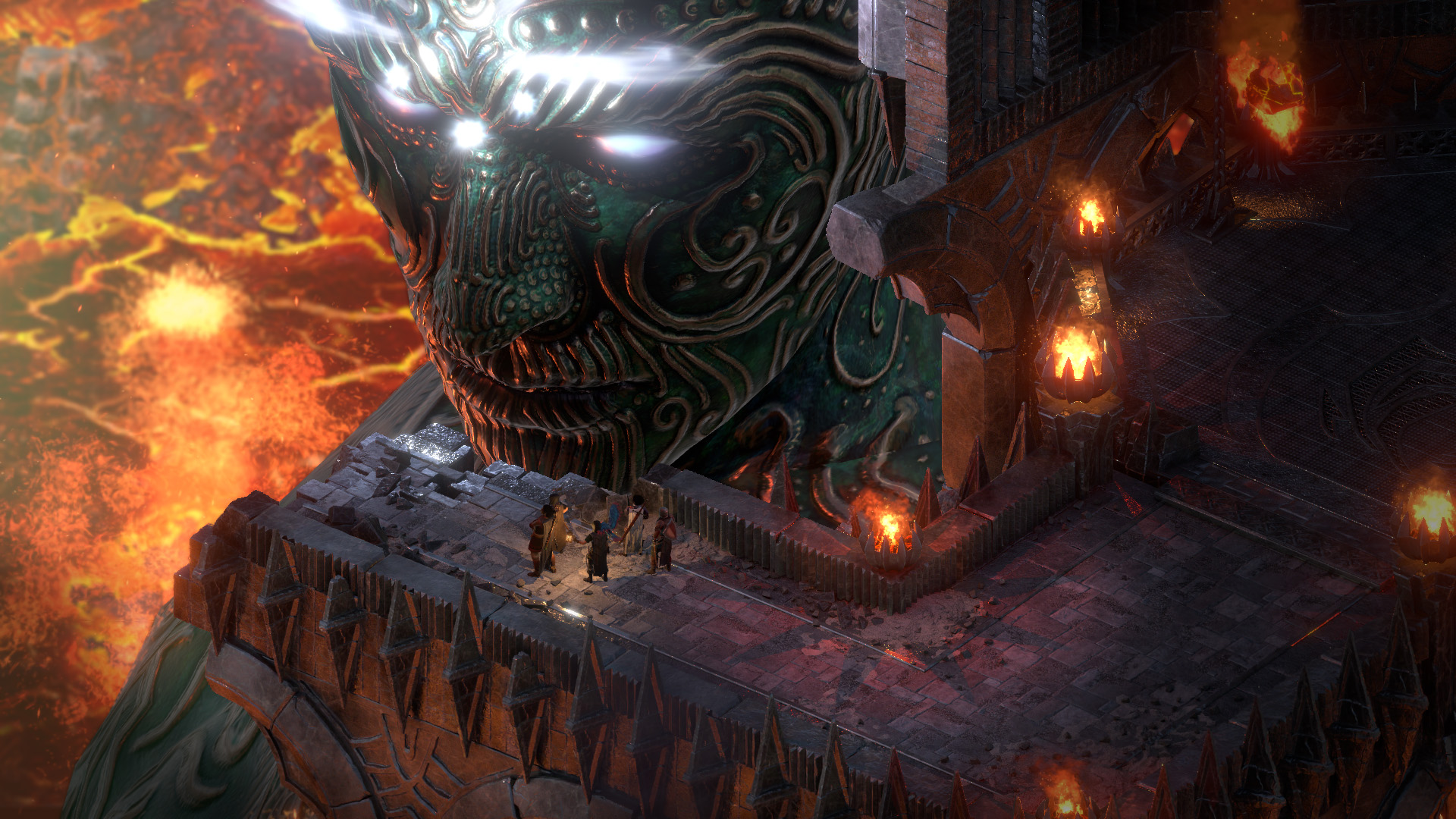
The only way (that I found) to retrieve the gold peacefully was to explain to the warrior that the human needed the money to live, to shelter himself and to eat. The Aumaua, at first confused and then disgusted that the human had no Chief to provide such things for him, gladly gave the money back. Her intention was never to steal the man’s livelihood, only his luxury. But the cultural misunderstanding that is rife in the world of PoE2 meant that she had not considered that the human society did not operate in the same way as her tribal group, by which she was assured the necessities of life. This is a deeply considered socio-political environment, and its intricacy is tied directly to the gameplay and the choices that your character makes. This constitutes fantasy writing of the absolute highest quality, the likes of which are seen so rarely in a video game. Bravo, Obsidian.
Visually, Obsidian have outdone their previously stellar work in PoE1 and Tyranny. Environments in PoE2 are the most gorgeous, luminous landscapes ever designed in an iso-RPG, and while some of the less impressive maps amount to straight-lined, blocky garbage, the peaks are most certainly higher than the troughs are low. The change of setting allows for a refreshing new visual theme in the open ocean and many, varied island landscapes, which bring some much-needed originality after the typical fantasy environments of PoE1’s Dyrwood.
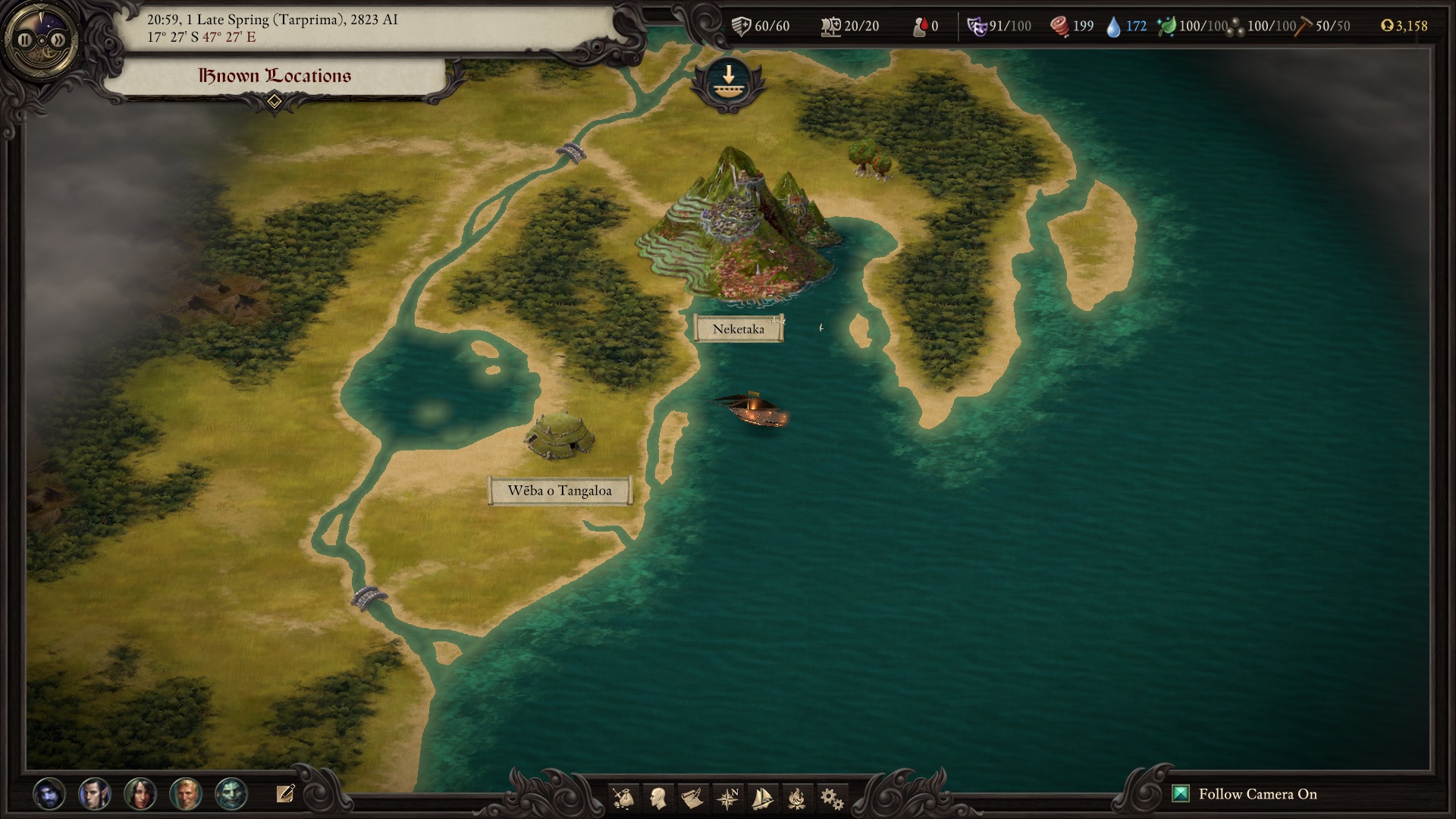
On the topic of the open ocean, PoE2’s new, dynamic world map provides the most significant change in gameplay over its predecessor. You’ll frequently be diverted and distracted while sailing between the many islands of the Deadfire Archipelago, exploring sunken ships, uncharted landings and supernatural oddities. It’s an engaging way to explore the world and is a welcome addition after walking the same unchanging paths across PoE1’s static world map. The ship management systems are also fun to engage with at first, although becoming repetitive and arbitrary over time. Still, your nautical crew become an essential part of the journey and will be by your side in countless naval battles before your quest is over.
Naval combat, like other systems pertaining to the ship, feels a little half-baked and, while functional, does little to hold your attention after the 9th or 10th battle. The purchasable ship upgrades don’t have much, if any, of a discernible impact on your battle readiness, and come across more like shallow attempts at depth in a system that wasn’t necessary.
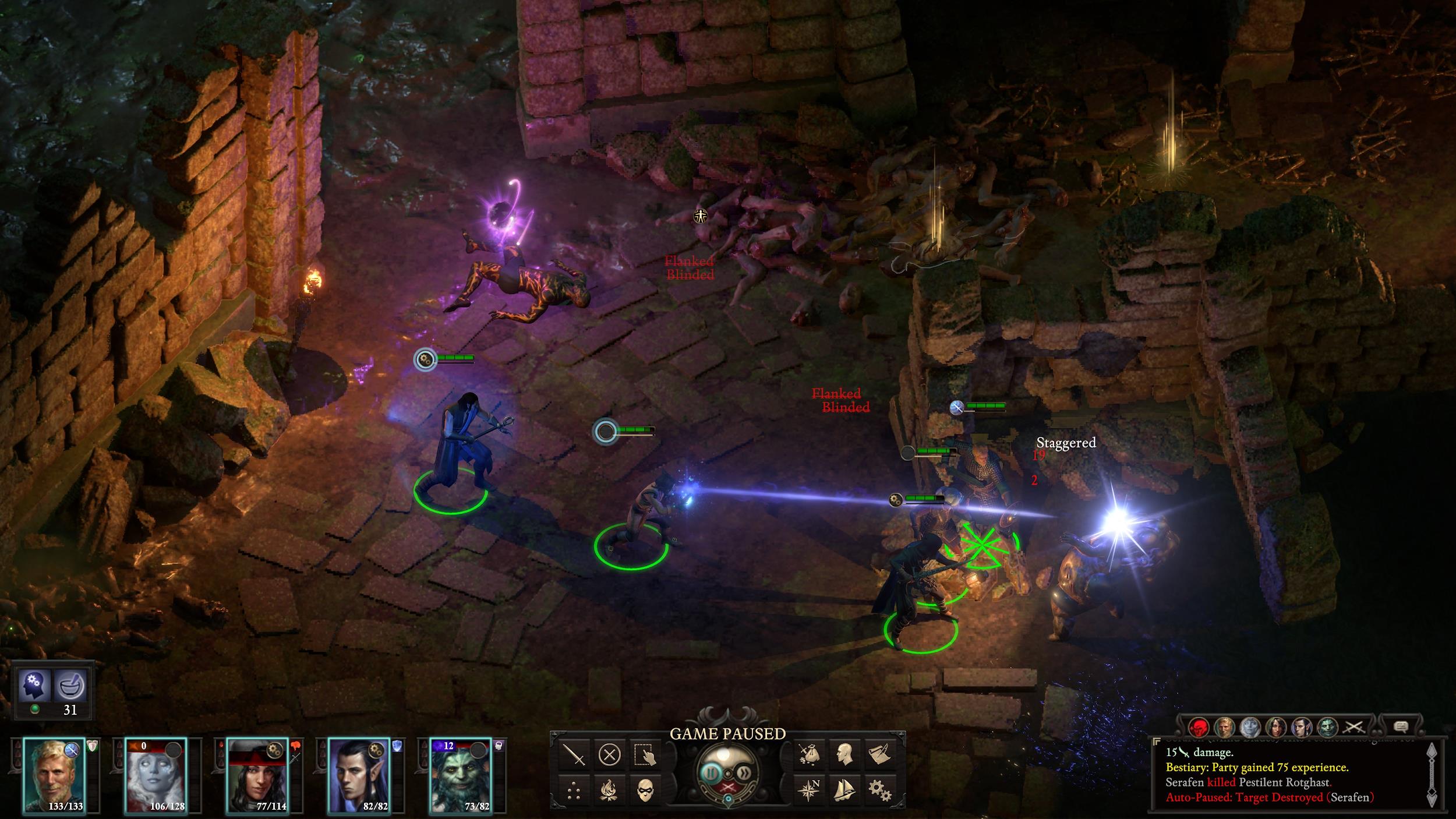
Regular, on-foot combat fares much better than its nautical counterpart and builds upon the expected CRPG formula by allowing hundreds of abilities across a litany of classes and multi-classes, each wholly distinct yet synergistic with the other classes in the game. The multi-class system, in particular, allows for incredible diversity in your character builds and offers so much depth that it’ll be years before anyone is even close to surmising optimal builds, loadouts and ability combinations.
It must be said, though, that the pause-click-unpause system that CRPGs have gotten us used to is just outdated and tiresome to work with, especially when paired with such complex mechanics. The game frequently devolves into an absolute mess of slow-motion, inaccurate clicks, accidental friendly-fire, missing moving opponents; all frustrating blights on an otherwise exciting system. PoE2 would benefit greatly from a turn-based system that cleaned and structured combat scenarios such that the systems themselves could be the focus, rather than your ability to juggle obtuse mechanics in real time. The current result is difficult to handle and ugly to watch.
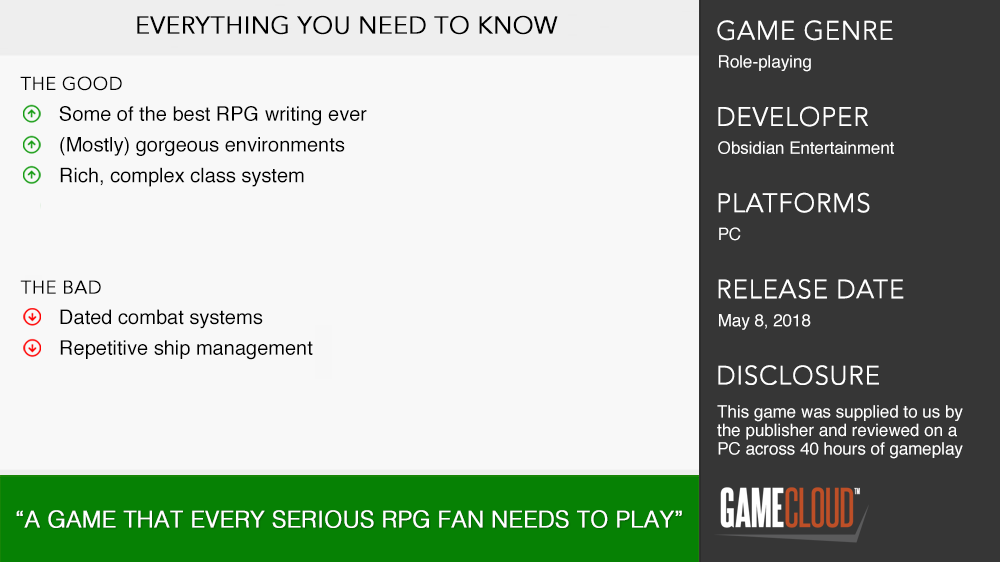
Pillars of Eternity II: Deadfire knows its audience and understands their focus, delivering its best content where it matters most; the story. The world of PoE2 is alive and breathing and teems with hundreds of characters ready to pull you into their own plot threads. Though it is let down a little by its reverence to ancient combat mechanics and an attempt to tack on new systems, the game shows off the love and care of its creators in the complex, interwoven class systems that allow for incredible diversity in combat approaches, as well as the beautiful design and graphics work that sees the Deadfire Archipelago glowing as few settings have done before. PoE2 is a title that every serious RPG fan needs to spend some time on.











